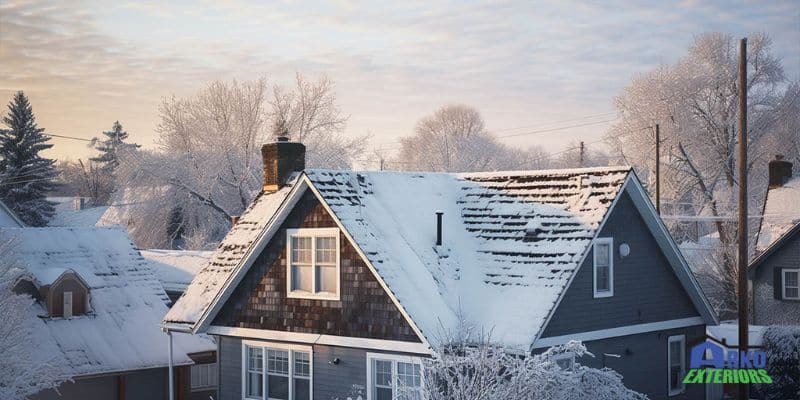Winters in Minnesota are well-known for two things: subzero temperatures and lots of snow. It’s undeniable that pure white snow caking every roof in the neighborhood can be a beautiful sight. However, too much snow can spell trouble for your home’s roof.
When snow piles up, the weight of it places strain on your roof. When a huge amount of snow accumulates, it’s even possible for a roof to collapse. Furthermore, melting snow can create ice dams on the edges of your roof, which may result in leaking, mold growth, and water damage. Continue reading to learn more about the problems of snow piling up on the roof of your Twin Cities home and what you can do to prevent this.
Your Roof’s Snow Load Capacity
Every roof has a different snow load capacity that is dependent on a few factors, including the shape, the pitch, and the type of shingles. Many homes in the Twin Cities area have asphalt shingle roofs, which can hold about 20 pounds of weight per square foot. What this means in layman’s terms is that your roof can probably be buried in 3-4 feet of snow before you have to start worrying about a collapse. It’s worth noting that a roof shingled with metal panels can hold more weight than a traditional asphalt shingle roof can. Also, roofs with steeper pitches may not have higher snow load capacities, but they’re less likely to accumulate problematic amounts of snow.
How much snow your Minnesota home’s roof can hold also depends on the type of snow. The weight of snow can vary drastically between different snowfalls. Ordinarily, snow weighs about 4-6 pounds per square foot. However, when wet and heavy snow falls, it can weigh as much as 20 pounds per square foot, meaning that your roof will be placed under strain far more quickly. In truth, your roof is unlikely to collapse unless a historic snowfall occurs or several large snowfalls accumulate in a short time. But a large amount of snow weighing down on your roof can still create leaks and cause shingle damage.
Tips for Preventing Winter Roof Damage
Heavy snowfalls during Minnesota winters can be tough on roofs but with a few simple measures, you can reduce the risk of damage to your roof. A good first step is to thoroughly clean out your gutters before winter arrives. If gutters become clogged with leaves and other debris, they’re more likely to freeze up in winter. Clogged and frozen gutters often result in ice dams forming along the edges of roofs, which traps snow and allows more of it to pile up. If ice dams prove to be a recurring problem, you may need to take measures to improve ventilation or insulation, which should reduce your roof’s vulnerability to ice dams.
When an excessive amount of snow falls on the roof of your Twin Cities home, your best snow removal option is to use a specially designed roof rake. If you don’t have a roof rake, other tools can be used as substitutes; just make sure that they don’t have a sharp edge that could damage your roof. Work along the eaves of your roof, scraping off snow as you move toward the ridges. This will clear a path for out-of-reach snow to come tumbling down. Pull down in smooth, slow motions and don’t try to smack at snow or ice since doing so can cause damage to roof shingles.
Whatever you do, never climb up onto your roof to try to remove snow. Every year, deaths and severe injuries occur when homeowners slip and fall from their roofs when trying to do this. Depending on the height of your roof, you may need to climb up on a ladder with your roof rake, but don’t ever actually set foot on the roof itself.
Twin Cities Roofing Company to Solve Your Winter Roof Problems
At Arko Exteriors, we’re a local roofing company that helps our clients prevent winter roof damage from snow build-up and ice dams, as well as remediating ice dam issues to prevent further water damage to your home interior. Give us a call today if you’re in need of roof repair or ice dam prevention services in the greater Twin Cities metro area!

